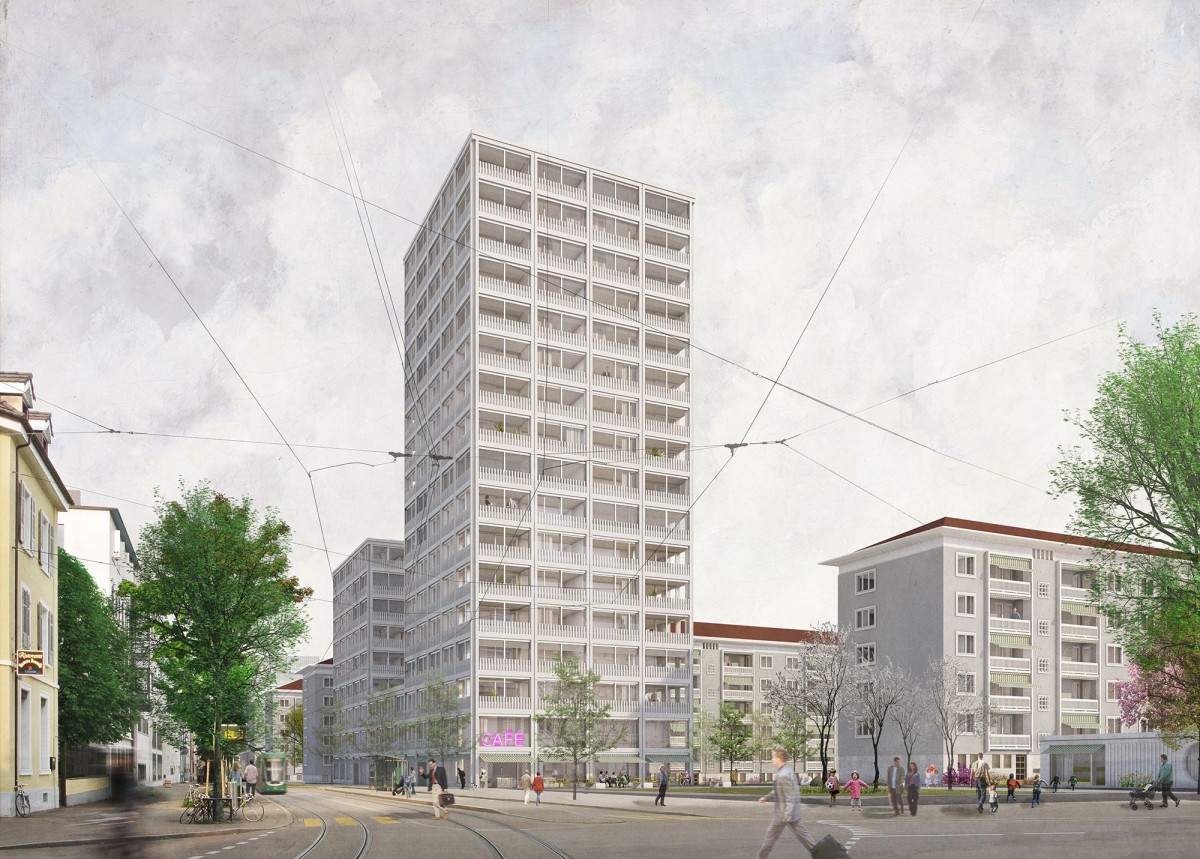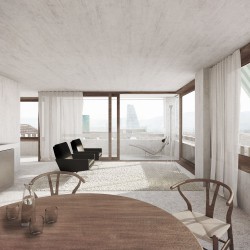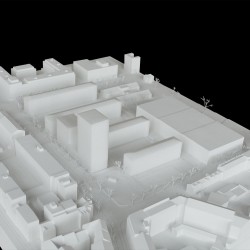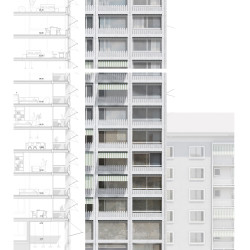On Horburgstrasse, the transition from residential to industrial quarter is manifested: While Wilhelminian block edge structures dominate in the nearby Matthäusquartier, traces of the industrial past are present in the adjacent Klybeck quarter. The Horburg housing residential, built in 1948 and commissioned by the CIBA, forms an important key to understanding the place being part of the chemical factory site. The current owner intends to develop the former works housing residential – the original settlement structure will be integrally preserved and redensified with only one single component.
The Horburg housing residential, built by the Basel architects Arnold Gfeller, Hans von der Mühll and Paul Oberrauch, was constructed as a solid six-story building in an open cell construction method, thus representing both an architectural and a structural innovation. The structural addition is being developed in the sense of a careful handling of the existing buildings on the remaining open space and fits precisely between the two shorter buildings of the four row houses and Horburgstrasse. The building volume consists of a three-storey base with two superstructures, whose form and heights are based on the direct surrounding conditions. At Horburgplatz, the head building rises up to become a high-rise; the corner building redefines the seemingly uninhibited square. The height development evolves in relation to the industrial high-rise buildings and makes visible the historical interface between the perimeter block development of the residential quarter and the open development of the industrial quarter.
Through sculptural shaping of the building body and symbolic shapes of opening, the reference to the richly designed architectural heritage of the works housing residential is established and translated in a contemporary manner. Thanks to the different staggering of volumes, the two head ends are different and thus react to the respective contextual references. The sculptural quality of the body echoes the structuring themes of the longitudinal buildings. With the materiality being composed in light-toned ashlar, the natural coloration of the surrounding buildings is absorbed in natural stone and plaster. The result is a new overall ensemble that continues the independence of the district to the same extent.
_
Location Basel, Switzerland
Competition 2016 – 2017, 1. Prize
Client Credit Suisse Investment Foundation Real Estate Switzerland
Commissioning model ARGE GP Buchner Bründler Architekten with Proplaning AG, Basel
Architecture Buchner Bründler Architekten
Partner Daniel Buchner, Andreas Bründler
Associate Bülend Yigin
Project management competitionA ude Soffer, Jon Garbizu Etxaide
Staff competition Luzi Speth, Nora Molari, Roman Hauser, Alexandra Galer
Project management planning Peter Beutler
Staff project planningH olger Harmeier, Fabienne Saladin, Johanna Noell













